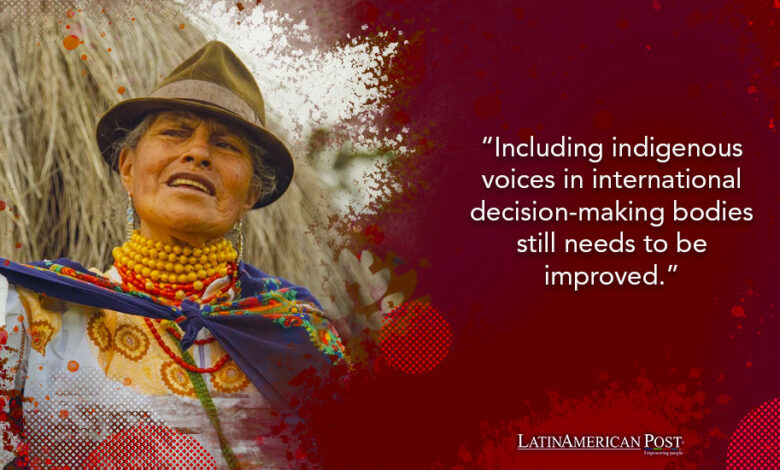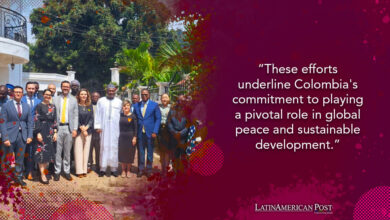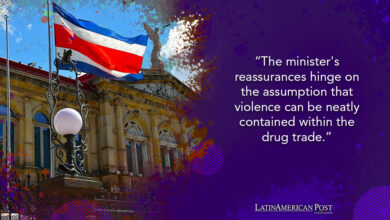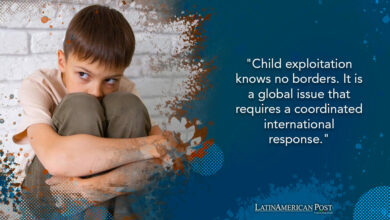Latin American Indigenous Voices Unheard in Environmental Policy

Despite vocal protests and international meetings, indigenous communities’ lack of effective participation and representation in key decision-making processes continues to underscore a rhetoric with little real change.
Across Latin America, indigenous communities have long struggled for recognition and representation within their national borders and on the global stage. Recent gatherings, such as the Conference of the Parties (COP) of the Escazú Agreement held in Santiago, Chile, have sparked renewed attention to these issues. However, despite the spotlight, there seems to be a considerable gap between the rhetoric of inclusion and the reality of actionable commitments.
The Escazú Agreement, adopted in Costa Rica in March 2018 and effective from April 2021, stands as a landmark treaty to protect environmental defenders and promote ecological democracy. To date, it has been ratified by only 15 of the 24 Latin American and Caribbean countries that initially signed it. This limited endorsement speaks volumes about the reluctance of governments to commit to protecting their most vulnerable citizens and ecosystems.
Indigenous leaders’ calls for action, like Elaine Shajian, president of the Regional Coordinator of Indigenous Peoples of San Lorenzo, poignantly remind us of the stakes involved. “We want to defend ourselves while we are alive, not when we are dead,” Shajian declared at the CEPAL headquarters in Santiago. Her statement echoes the sentiment of countless indigenous activists who face daily threats for protecting their ancestral lands.
Latin America remains the most dangerous region in the world for environmental defenders, with a staggering number of attacks often resulting in fatalities. The year 2020 was recorded as the deadliest year for environmentalists, with three-quarters of these attacks occurring in Latin America, as per the NGO Global Witness. Countries like Colombia and Mexico top the list, highlighting a broader regional issue of impunity and lack of adequate protection.
Yet, including indigenous voices in international decision-making bodies still needs to be improved. For instance, Dina Juc, a coordinator for the Mesoamerican Alliance of People and Forests, criticized CEPAL for falsely asserting that indigenous groups are represented. “They include us only as representatives in the audience, not in the decision-making process,” Juc lamented. This exclusion is symptomatic of a more significant systemic issue where decisions impacting indigenous territories are made without their consent or involvement.
The digital divide further exacerbates this exclusion. Many indigenous communities in regions like rural Guatemala need more basic amenities such as electricity and internet access, making it nearly impossible for them to participate in online discussions. This technological gap silences their voices and reinforces the inequalities that hinder their progress.
The rhetoric of inclusion and protection often touted by governments and international bodies falls short in the face of these realities. The ceremonial acknowledgment of indigenous rights does little to change the power dynamics that marginalize these communities. What is urgently needed is not just recognition in principle but substantial changes in how indigenous groups are integrated into the policy-making process.
To bridge this gap, several steps can be considered:
- Mandatory Representation: International treaties and conferences should require compulsory representation of indigenous groups in their governance structures. This would ensure that decisions reflect the interests and insights of those directly affected by environmental policies.
- Local Empowerment: Strengthening local governance structures to better advocate for and protect indigenous rights can empower communities from the ground up. This includes providing legal support to navigate and influence national and international legal frameworks.
- Education and Access: Investing in infrastructure to reduce the digital divide and increase access to education within indigenous communities would enable them to engage more effectively with global platforms.
- Cultural Sensitivity Training: For organizations like CEPAL and others involved in environmental governance, training in cultural sensitivity and the specific issues facing indigenous peoples can improve engagement strategies and policy outcomes.
- Protection Mechanisms: Stronger mechanisms to protect environmental defenders, supported by international oversight, could help reduce the impunity with which attacks against activists are carried out.
The situation calls for a shift from tokenistic gestures to genuine structural changes that recognize and empower indigenous communities as equal partners in the fight for environmental and social justice. Without this shift, the risk is that international commitments will remain just that—commitments on paper, with little impact on the ground where it is most needed. As Latin America continues to face environmental degradation and social upheaval, the role of indigenous communities as stewards of the land is more critical than ever. It is time their voices are not just heard but heeded.
Also read: Latin American Fashion Summit: transformación de la moda





